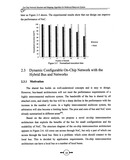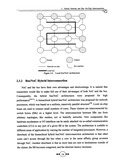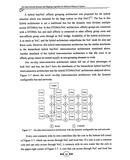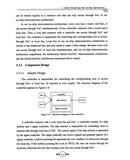![网上多核 《网上多核》[59M]百度网盘|pdf下载|亲测有效](/downpdf2/uploads/2024-01-20/2f815bffbe8e9ea5.jpg)
![《网上多核》[59M]百度网盘|pdf下载|亲测有效](/downpdf2/uploads/2024-01-20/2f815bffbe8e9ea5.jpg)
网上多核 pdf下载
8.99¥
10.99¥
内容简介
本篇主要提供网上多核电子书的pdf版本下载,本电子书下载方式为百度网盘方式,点击以上按钮下单完成后即会通过邮件和网页的方式发货,有问题请联系邮箱ebook666@outlook.com
内容简介
Chip multiprocessors have been the mainstream in computer architecture. Such processors have more than one core on a single chip to obtain higher performance and lower power consumption. However, when more and more cores are integated onto the chip, the increasing number of cores makes the communication become the center of the on-chip architecture. It has become a new challenge on how to utilize these integrated cores in a single area with high efficiency. This book provides the explorative research on the above problems. There are four main topics discussed in this book. The first is the hybrid on-chip structure, which consists of the on-chip network and the on-chip bus. The bus is used to connect the local neighbours, and the network is used to connect the remote nodes. And then this book provides discussions on on-chip structure and optimizations including the dynamic reconfigurable network, the
design of critical path-driven routers and the transmission bypass optimization. They are used to achieve better performance. The third topic focuses on the on-chip memory design, which is called the on-chip networked memory system. The memories are connected by the network with distributed memory management units. At last, the mapping algorithms are discussed, which aim to map the tasks to the on-chip cores with high efficiency and low-power consumption. This book has provided some works innetwork-based manycore systems. The designs and algorithms provided in this book are potential
solutions for multicore/manycore architecture. It can be used as the reference for future work and for the researchers who focus on the computer architecture.
design of critical path-driven routers and the transmission bypass optimization. They are used to achieve better performance. The third topic focuses on the on-chip memory design, which is called the on-chip networked memory system. The memories are connected by the network with distributed memory management units. At last, the mapping algorithms are discussed, which aim to map the tasks to the on-chip cores with high efficiency and low-power consumption. This book has provided some works innetwork-based manycore systems. The designs and algorithms provided in this book are potential
solutions for multicore/manycore architecture. It can be used as the reference for future work and for the researchers who focus on the computer architecture.




![《ASP.NET动态网页设计案例教程(C#版)(第2版)》[62M]百度网盘|pdf下载|亲测有效](/downpdf2/uploads/rBEQWVETQWEIAAAAAANAIF9vvIoAAAoUwOMzAAAA0A4947.jpg)
![《人工智能算法基础唐宇迪等著中国人工智能学》[64M]百度网盘|pdf下载|亲测有效](/downpdf2/uploads/2024-01-20/5e1411329b290a8e.jpg)
![《创客实践:6-岁孩子就能动手学会的超酷项目:easyelectronicspr电子工》[88M]百度网盘|pdf下载|亲测有效](/downpdf2/uploads/2024-01-20/3e8254396929f9b7.jpg)
![《Linux高效运维实战(异步图书出品)》[45M]百度网盘|pdf下载|亲测有效](/downpdf2/uploads/a72d7a9cb97efe72.jpg)